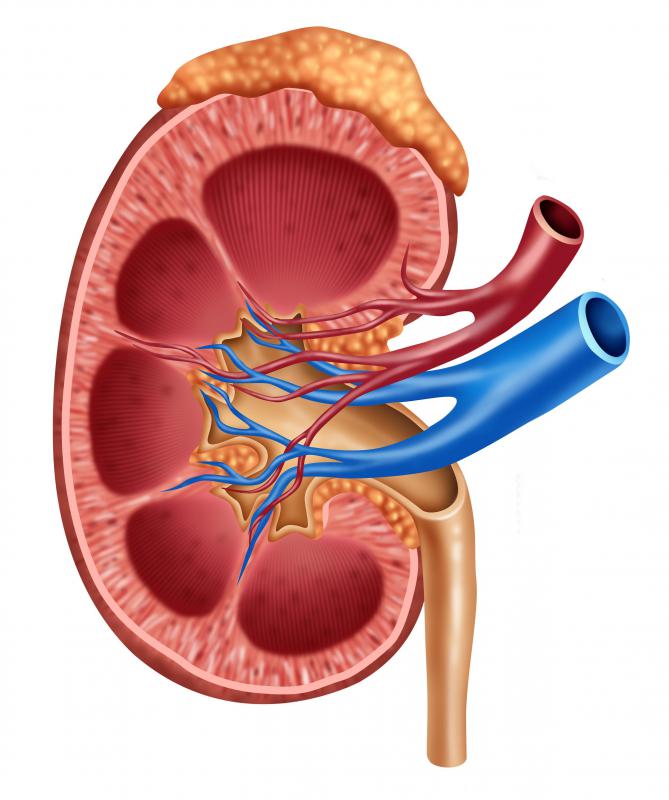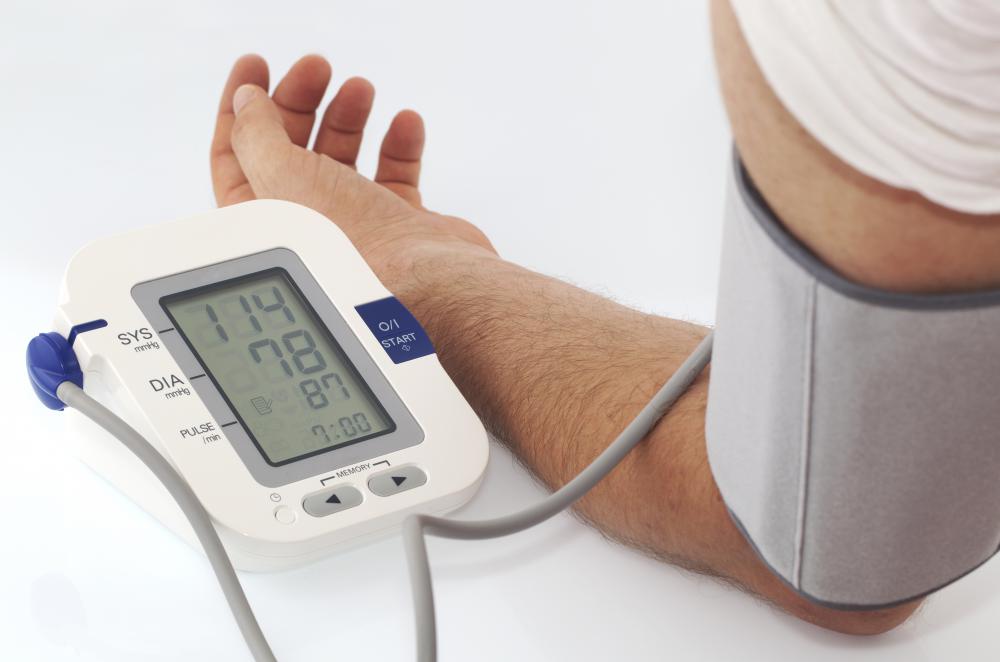At WiseGEEK, we're committed to delivering accurate, trustworthy information. Our expert-authored content is rigorously fact-checked and sourced from credible authorities. Discover how we uphold the highest standards in providing you with reliable knowledge.
What is the Adrenal Medulla?
The adrenal medulla is a mass of cells that make up the center of the adrenal gland beneath the outer adrenal cortex. These irregular-shaped cells are bunched together with blood vessels. Cells of the medulla are called chromaffin cells since they stain a brownish color in reaction to chromic salts. The adrenal medulla can secrete norepinephrine and epinephrine, also known as adrenaline, when stimulated. Trace amounts of dopamine may also be released by the adrenal medulla.
Generally, the adrenal medulla is a sympathetic ganglion — excitable cells that are part of the sympathetic nervous system (SNS). The sympathetic nervous system activates the adrenal medulla into secretion when stress is present. This action is preparation for the body's fight-or-flight response in times of stress, such as anticipated danger. The ratio of the hormones released varies by species. A human releases about 80 percent epinephrine and 20 percent norepinephrine. In contrast, chickens release about 30 percent epinephrine and 70 percent norepinephrine.

Tyrosine is the amino acid responsible for converting proteins to epinephrine and norepinephrine in the adrenal medulla. Both hormones are released into the bloodstream in response to stress, heavy blood loss, or exercise. The effects last for a while and may not dissipate immediately after stress levels have dropped or exercise has concluded. Epinephrine can also be released due to low levels of glucose in the blood.

Epinephrine causes the breakdown of glycogen into glucose in the liver, widens the arteries in the body, and makes fatty acids release from fat tissue. Norepinephrine raises blood pressure and narrows blood vessels. The most noticeable physiological effect is the increase in the heart rate and force from the epinephrine. Bronchioles in the lungs dilate for increased intake and outtake of air. The metabolism increases, which increases the amount of calories and glucose consumed and results in more energy. The pupils dilate, the gastrointestinal system decreases acid, and non-critical motor activity is reduced.

Hyper activity of the adrenal medulla in the instance of a tumor can cause negative effects, such as hypertension or headaches. The effects of the hormones produced by the adrenal medulla after exercise are viewed as beneficiary. On the other hand, the decrease in gastrointestinal acids causes indigestion, which is why exercising less than one hour after eating is not recommended.
AS FEATURED ON:
AS FEATURED ON:



















Discuss this Article
Post your comments